
General Joseph Joffre in 1915, before he became a Marshal (Musée Carnavalet)
This article was published previously in Saigoneer
French government photographers have left us a detailed photographic record of Great War hero Marshal Joffre’s December 1921 visit to Saigon
After distinguishing himself in World War I, former French Commander-in-Chief Joseph Joffre (1852-1931) became a Marshal of France and turned his attention to diplomatic affairs. It was in this capacity, in 1921-1922, that Joffre embarked on a grand goodwill tour taking in the United States, Indochina, Siam, Japan and China.
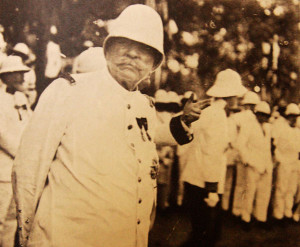
Marshal Joffre in Saigon
Altogether, Joffre spent nearly a month in Indochina, visiting Cochinchina, Cambodia, Annam and finally Tonkin, where he had served between 1885 and 1888 as an engineering officer. In advance of his visit, several streets and squares were named after him.
From the time of his arrival in Saigon on the morning of 9 December 1921 to his departure for Phnom Penh on 13 December 1921, Joffre’s visit was tightly choreographed and very thoroughly documented by government photographers.
Here is just a small selection from the many images taken during Joffre’s visit, along with his complete itinerary, which was published in the Écho annamite newspaper (22 November 1922) nearly two weeks before his visit!

An “Arc de Triomphe” was installed in the rue Catinat in honour of Marshal Joffre

Marshal Joffre and the Governor-general leave the Palace
Day 1 – 9 December 1921
8am – Embarcation at the Rigault de Genouilly pier
9.30am – Presentation of government agencies and services at the Palace of the Government-general
11am – Reception at the Town Hall, address by the Mayor
12pm – Private lunch at the Palace of the Government-general
4pm-5pm – Visit to Saigon, passing through the place du Maréchal Joffre (former water tower square)
5.30pm – Visit to the Governor of Cochinchina
6pm – Reception for war veterans
7.30pm – Private Dinner at the Palace of the Government-general
8.30pm-9pm – Torchlight procession
9.30pm – Fireworks display

Marshal Joffre and the Governor-general visiting the Chinese city

Marshal Joffre meeting notables in Cholon
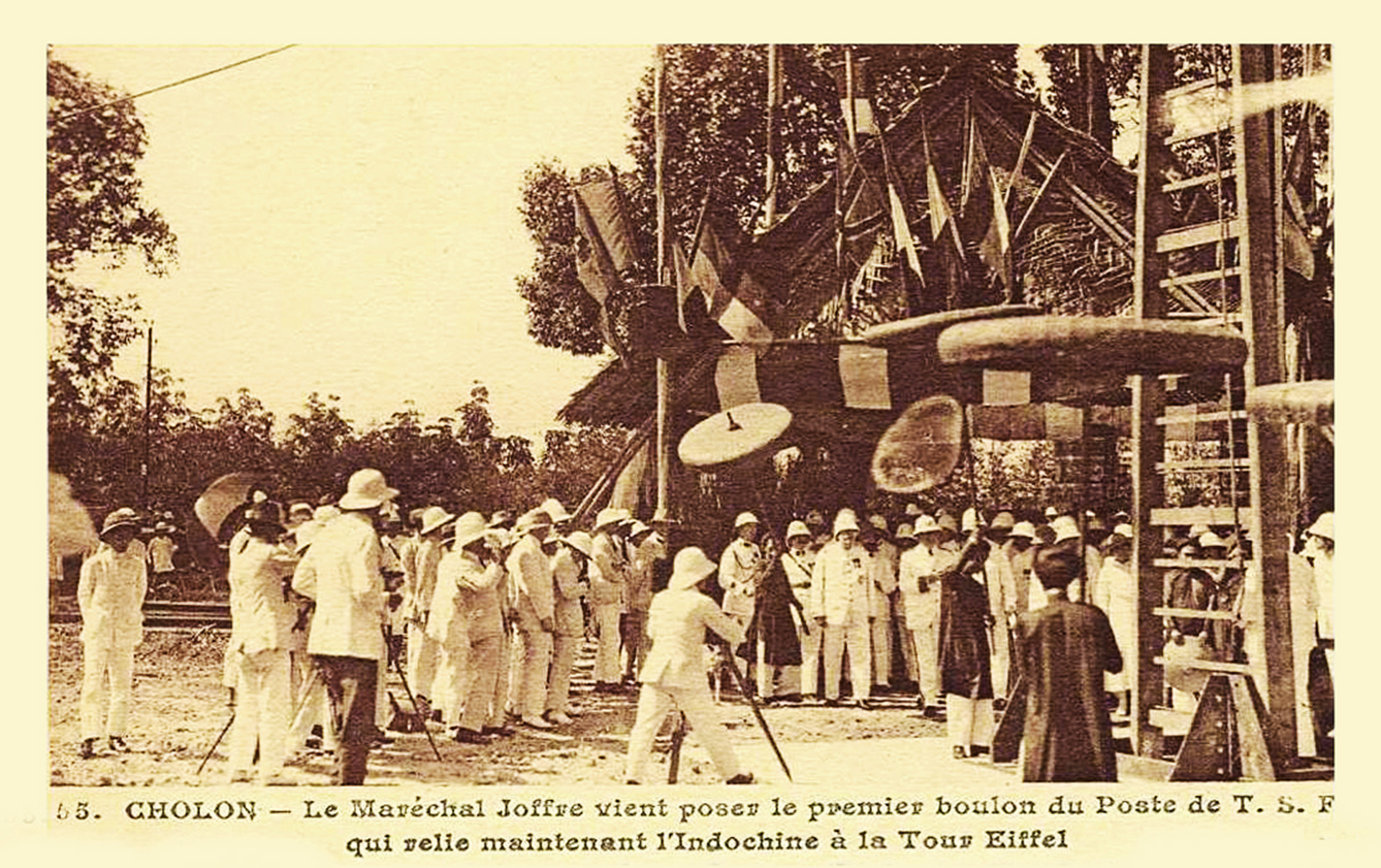
Marshal Joffre at the ceremony for laying the foundations of the TSF station in Cholon
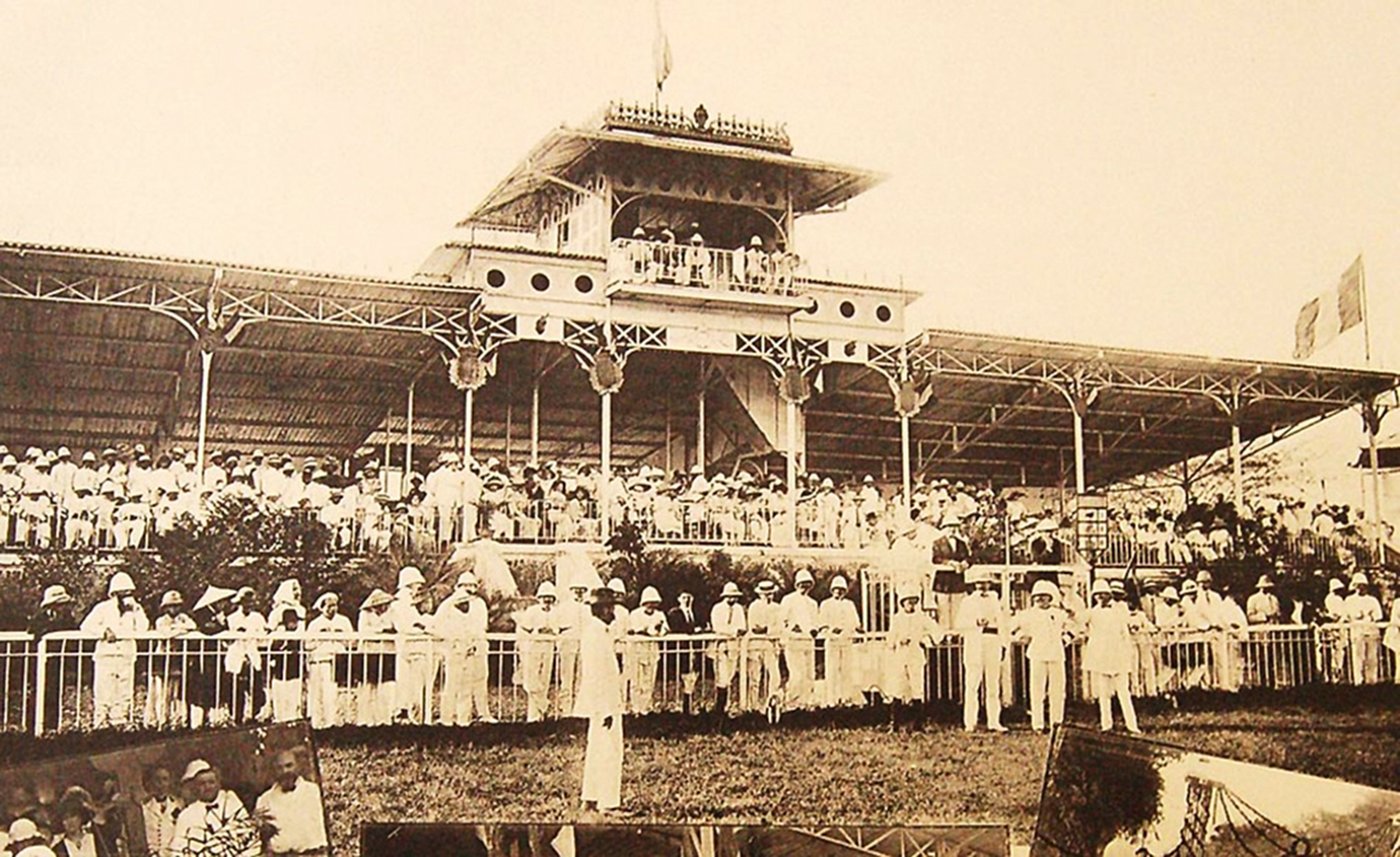
Marshal Joffre at the horse races
Day 2 – 10 December 1921
9am-10am – Visit to Cholon
10.15am – Laying the foundations at the new TSF (Wireless) Station, Cholon
12pm – Lunch at the Palace of the Government of Cochinchina
4pm – Horse Racing
5.30pm – Reception for indigenous notables of the Government of Cochinchina
6pm – Reception for Catalans at the Continental Hotel
8pm – Dinner at the Palace of the Government-general
9.45pm – Ball at the Palace of the Government-general
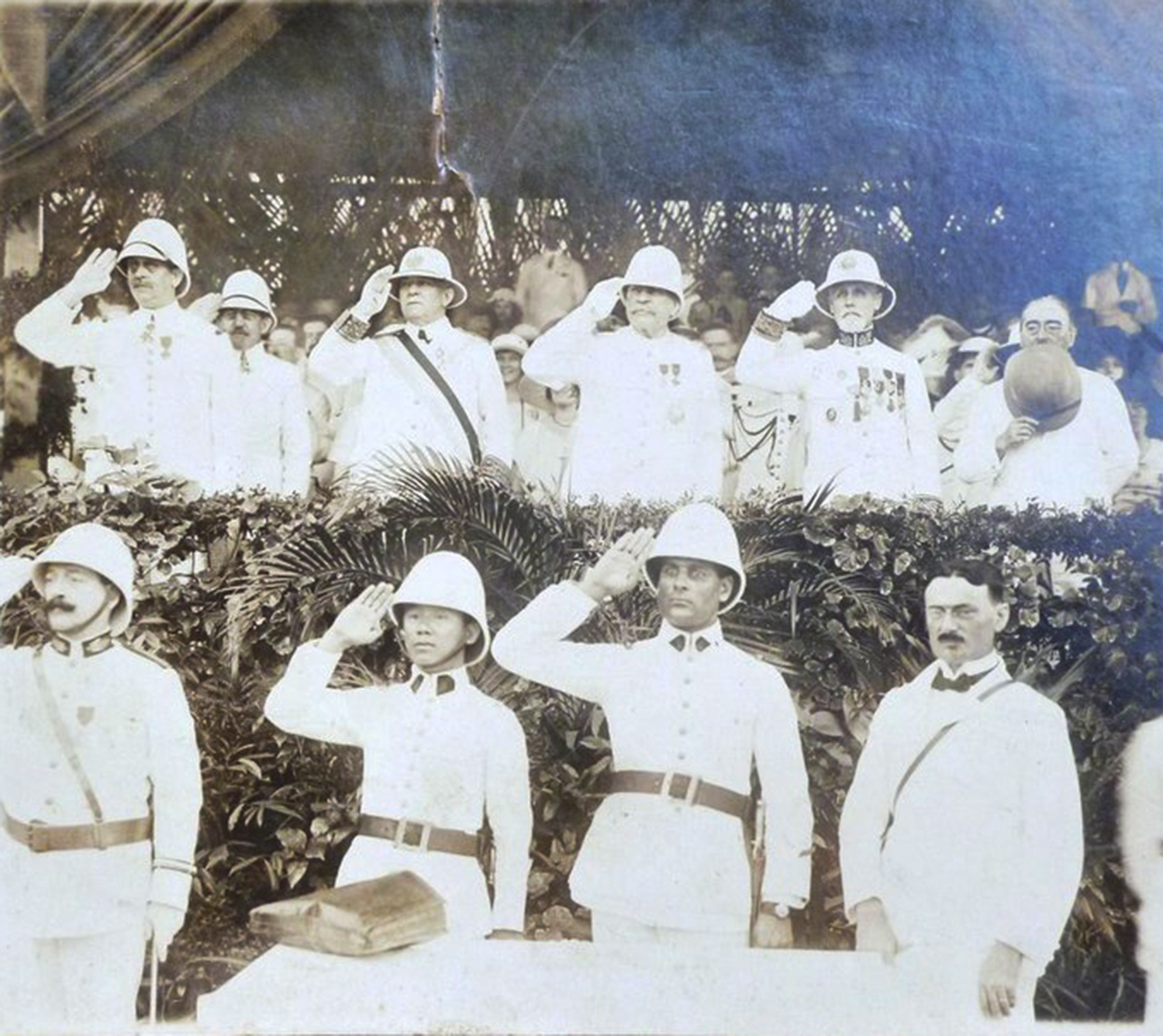
Officers stand to attention as Marshal Joffre reviews the troops in Saigon on 11 December 1921
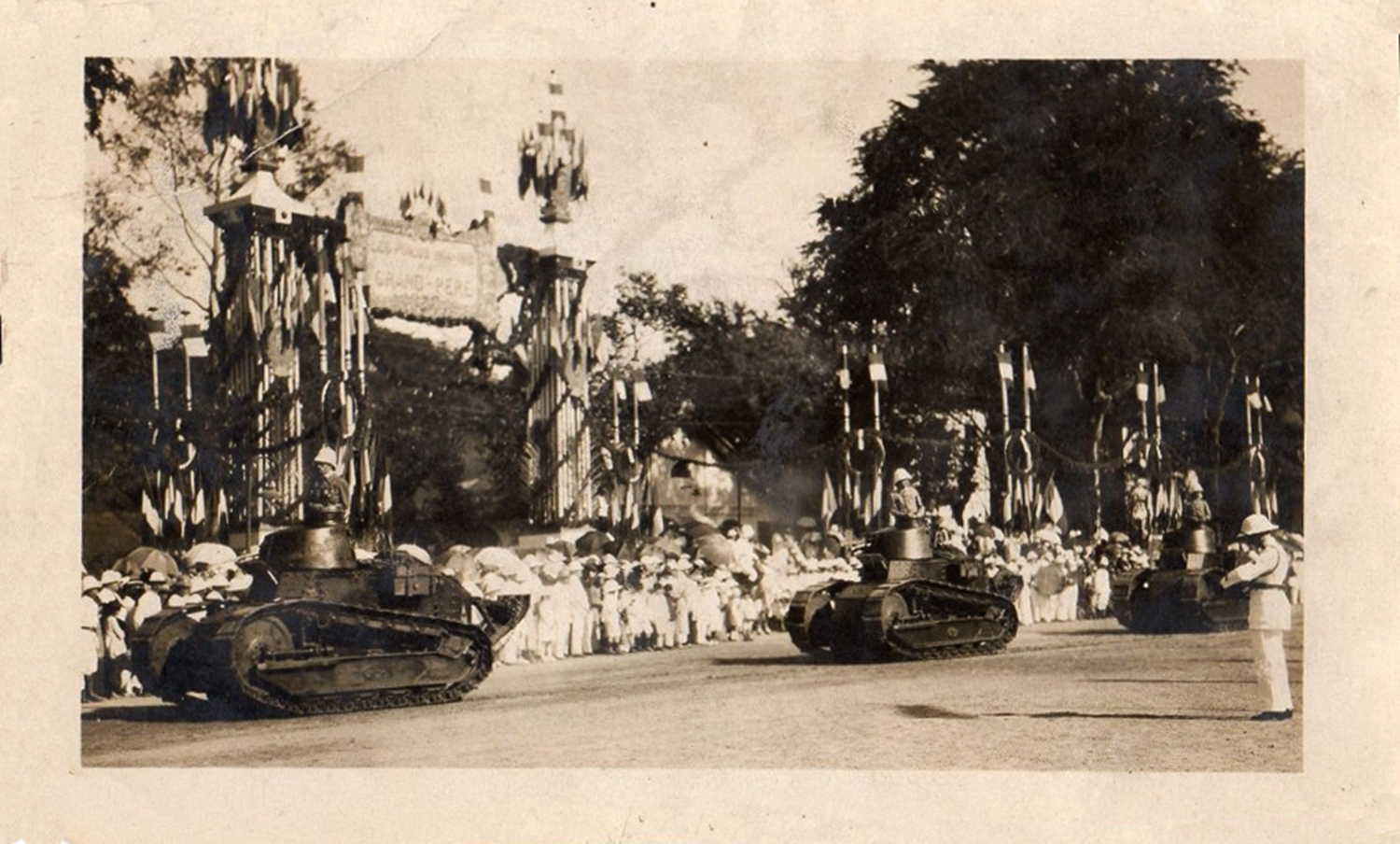
Tanks parade before Marshal Joffre in Saigon
Day 3 – 11 December 1921
7.30am – Grand review of garrison troops
12pm – Private lunch at the Palace of the Government-general
4.30pm – Flower parade
7.30pm – Dinner at the Palace of the Government-general
9pm – Reception at the Cercle militaire

Ethnic minorities visiting Saigon in honour of the arrival of Marshal Joffre
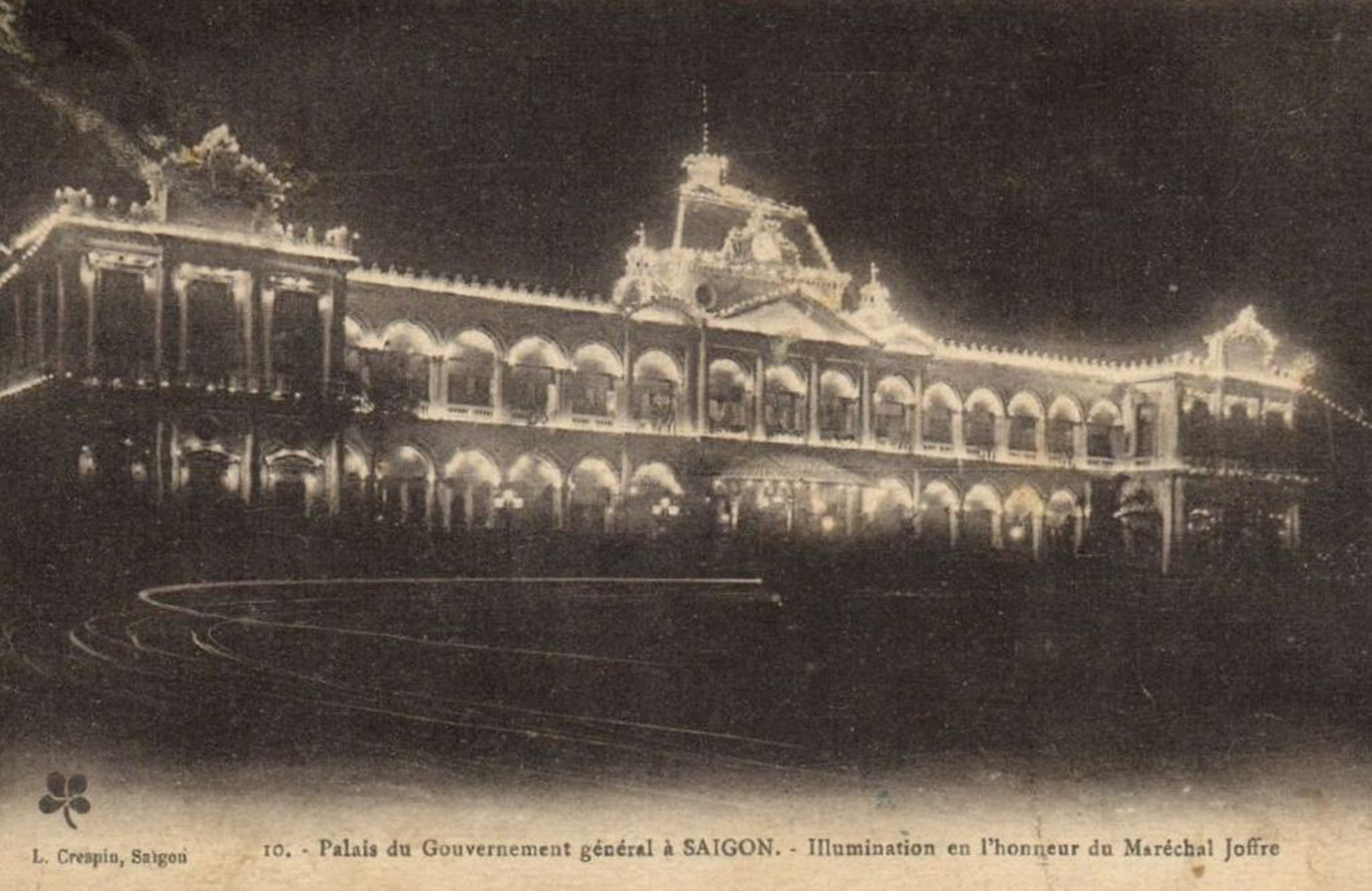
The Palace of the Government-general in Saigon, illuminated in honour of Marshal Joffre
Day 4 – 12 December 1921
Morning – Excursion to Cap-Saint-Jacques, breakfast at the Cap
Afternoon – Return to Saigon, or trip to Thudaumot, Bienhoa
8pm – Private Dinner at the Palace of the Government-general
9pm – Public ball, boulevard Charner
Day 5 – 13 December 1921
8.30am – Departure from Saigon to Phnom Penh
Officers in charge of different parts of the programme
Torchlight procession: COMMANDANT GUILLERMEAU
Flags, Illuminations and Fireworks: Messrs. JOSSE & ROCHÉ
Horse races: M. BALLOUS
Flower parade: Messrs. BALLOUS, MESSMAECKER, FONTANA, JOSSE, ROCHÉ, LE VILLAIN, JACQUE
Public ball: Messrs. MARTIN & FONTANA
Tim Doling is the author of the guidebook Exploring Saigon-Chợ Lớn – Vanishing heritage of Hồ Chí Minh City (Nhà Xuất Bản Thế Giới, Hà Nội, 2019)
A full index of all Tim’s blog articles since November 2013 is now available here.
Join the Facebook group pages Saigon-Chợ Lớn Then & Now to see historic photographs juxtaposed with new ones taken in the same locations, and Đài Quan sát Di sản Sài Gòn – Saigon Heritage Observatory for up-to-date information on conservation issues in Saigon and Chợ Lớn.




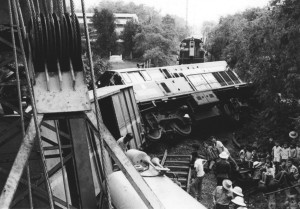
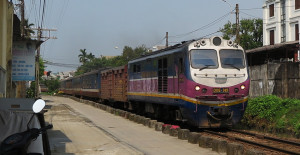 The talk concludes with a brief overview of recent plans to develop a modern twin-track electrified standard gauge railway, linked not just to China but also to Laos, Cambodia, Malaysia and Thailand.
The talk concludes with a brief overview of recent plans to develop a modern twin-track electrified standard gauge railway, linked not just to China but also to Laos, Cambodia, Malaysia and Thailand.